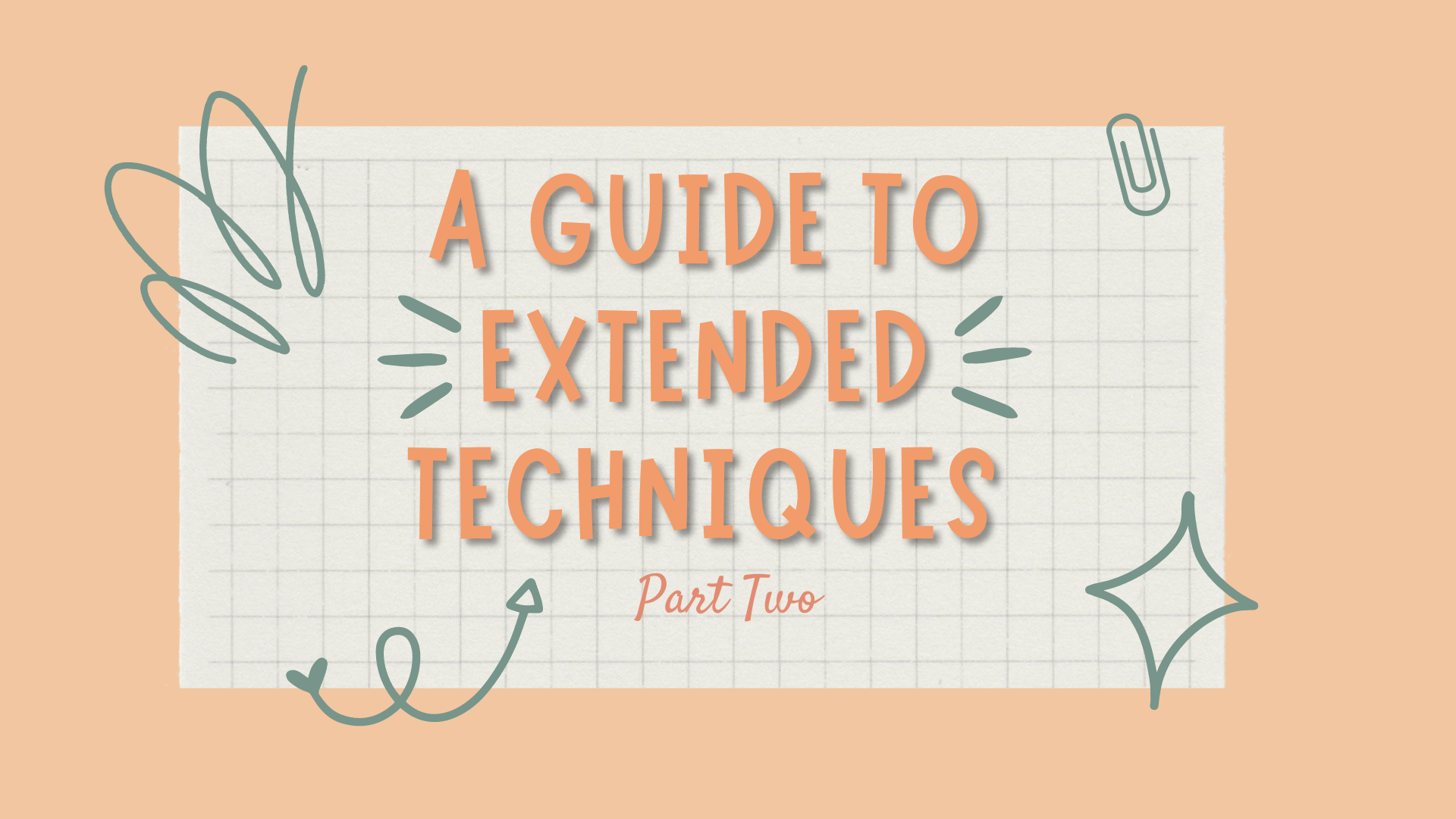Welcome to part two of extended techniques! In the first part I went over flutter tonguing, harmonics, singing and playing, multiphonics, whistle tones, key clicks, and jet whistles; so if you’re looking for help on those, head over to part one. You should take a look at part one anyway 😉. This post will be almost the exact same as part one, but with different techniques. Let’s have some fun!!
Air Sounds:
Air sounds, sometimes called residual sounds, are typically really easy to produce. They sound pretty much like wind blowing or air moving. The easiest way to play them is to just say “sh” while blowing across the embouchure hole. The typical flute embouchure isn’t needed. You can change the color of the air by using a different sort of “windy vowel” if the “sh” is too harsh. There’s also the option that many of us did in middle school band to practice during rehearsal and annoy our band director. For that, you just relax the embouchure and use a bit of air so the sound comes across, but there’s virtually no flute tone to the sound.
Note Bends:
Note bends are another popular extended technique and can be done a couple ways. The first way can only be done on an open-holed flute and is done just by sliding the fingers over or off of the hole in the keys. Usually, if the composer wants the note bend to be done this way, there will be a fingering somewhere to show you which fingers are sliding where. For this way, it’s most helpful to think about just moving your fingers, as if you were to scratch your thigh, or grabbing onto a pencil with just your fingers. The other way is by moving your lips, head, and even flute depending on what you want. These typically don’t bend as far as the first way, but can still be effective. You’re basically just adjusting the tuning of the note to bend it with your embouchure. It will always be easier and the note will bend more if you bend the note down, just try to play as flat as you can! Bending up is a bit harder, but can still be done, think about doing what we never think as flutists and play as sharp as you can. This way of bending notes can also be helpful for tuning. Just set up a tuner and practice bending the notes, eventually you’ll start to be able to recognize more when notes are in tune. The last and extra way of note bends is just to get a glissando headjoint…but that’s for some other time 🙂
Tongue Rams:
Tongue rams don’t appear very often, but I think they’re a lot of fun. They basically sound like a thud, similar to the sound of a bass drum hit. They sound really great on low notes as well as low flutes. Tongue rams can be done on higher notes, they just don’t have the same effect. To do them, it’s kind of like doing a jet whistle. You cover the embouchure hole with your lips, then basically quickly release air and have the tongue follow, stopping against the embouchure hole or lips. It’s kind of like when there’s a small hair in your mouth and you want it out.
Pizzicato Tongue:
Pizzicato tonguing is another percussive technique. It’s also basically the opposite of a tongue ram. So instead of pushing the tongue into the embouchure hole or lips. The tongue starts there and quickly moves back. Almost like when there’s a small hair in your mouth and you’re trying to stealthily get it out, unsuccessfully. Start on the lips, then pull back.
Timbral Trills:
Timbral trills are another extended technique that I always forget about when talking about extended techniques. They’re basically trills, but they give the trill a different color. It’s another one that when used, the composer will have a fingering above the note on how to perform the trill. They’re pretty common and easy to do.
Beatboxing:
This could be an entire separate post itself, honestly. Basically, anything you can do beatboxing-wise, you can do on the flute. Typically, there will be different vowels written above or below to guide the performer on what to beatbox. The most common I’ve seen is a bass kick, snare and cymbal sound, usually marked by a “b”, “K”, and “ts”, respectively. I feel like most of the time there’s beatboxing with flute, it’s within smaller sections, but there are pieces like Greg Patillo’s, that are almost entirely beatboxed.
Microtones/Quartertones:
Microtones are pretty common as well. Basically, they’re pitches in-between pitches. For example, a c-half sharp, would be a quarter above a c. This goes the same for quarters above and below all notes. There’s like a million of them and a lot of the time the same few are used in pieces, so once you start using them more you start to memorize the fingerings. The fingerings are also usually given to the performer, but I know that Robert Dick has a book that has every microtone fingering in it, which is super helpful. It’s a future goal of mine to get really comfortable with all of the fingerings, and the book is definitely going to help. But that’s not necessary to play these, as the fingerings are given to the performer. Also, I guess I should note how to play them. Good news, they’re played like normal. The only thing that’s different is just the fingering.

